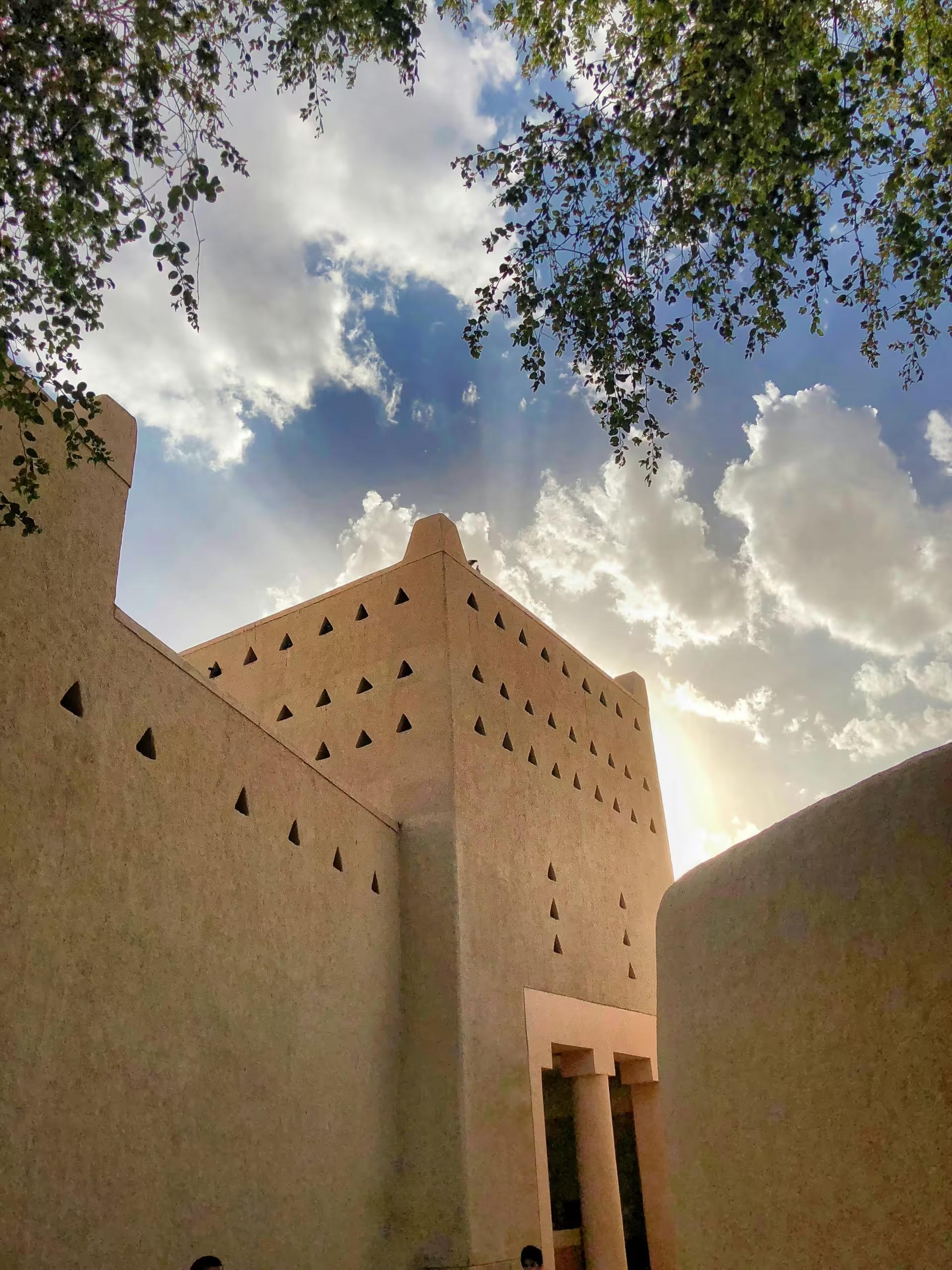Masmak Fortress in Saudi Arabia

Masmak Fortress in Saudi Arabia
Masmak Fortress, nestled in the lively heart of Riyadh, Saudi Arabia, is a historic landmark that holds a significant place in the nation's past. Erected in the 19th century, this fortress is not merely an impressive piece of architecture; it embodies the unity and cultural heritage of Saudi Arabia. Today, it stands as a testament to the country's journey toward unification and serves as a tribute to the rich history of the region.
Historical Background
Built around 1865 under the orders of Prince Abdulrahman ibn Sulaiman ibn Dabaan, who was the governor of Riyadh at the time, Masmak Fortress served primarily as a military stronghold. Its strategic positioning in Riyadh made it crucial for any ruling power aiming to dominate central Arabia. In the late 19th and early 20th centuries, the city became a battleground for various tribal and political factions, with Masmak Fortress often at the centre of conflicts.
A pivotal moment in Saudi history occurred in 1902 when King Abdulaziz Ibn Saud led a bold attack to reclaim the fortress from the rival Rashidi clan. This event marked the start of his campaign to unify the Arabian Peninsula, ultimately leading to the formation of modern Saudi Arabia. The successful recapture of Masmak is a symbol of pride and heralded a new chapter for the region.
Architecture and Design
Masmak Fortress exemplifies traditional Arabian architecture, showcasing its time's building techniques and styles. Constructed mainly from adobe and stone, the fortress was designed to endure the harsh desert environment while effectively defending against invaders. Its thick walls provide insulation against the heat, while small triangular windows allow for ventilation without sacrificing security. The fortress features a rectangular layout with a spacious central courtyard flanked by towering walls.
At each corner, four grand watchtowers allowed guards to keep an eye on the surroundings, offering a strategic vantage point to spot any approaching threats. The fortress's main gate, a robust structure made of thick palm wood reinforced with metal spikes, stands over 10 feet tall. A notable historical artefact remains lodged in the gate—a spearhead from King Abdulaziz's daring assault in 1902. Upon entering, visitors find a large open-air courtyard that leads to various rooms, storage spaces, and even a mosque, which serves as a communal space for prayer and gatherings.
The fortress also includes a "majlis," or sitting room, where leaders hosted guests and held discussions, reflecting the traditional values of hospitality in Arabian culture. This thoughtful design combines security with cultural significance, making the Masmak Fortress a remarkable example of functional architecture.
Masmak Fortress Museum
Today, Masmak Fortress is a well-preserved historical site converted into a museum showcasing Riyadh's rich heritage and Saudi Arabia's unification. Open to the public, the museum attracts both locals and international tourists. Visitors can explore exhibits featuring artefacts from the period, such as weapons, maps, traditional clothing, and photographs that document the country's evolution from a tribal society to a unified kingdom.
One of the museum's key highlights is a display of traditional Arabian swords and rifles similar to those used during the 1902 siege. Visitors can also navigate through the fortress layout, including the majlis and mosque, offering a real sense of life within the fortress during its prime. The exhibits also chronicle the history of the Al Saud family, providing context for the current ruling dynasty of Saudi Arabia. Multimedia presentations offer an engaging way for visitors to relive the events of the 1902 recapture, creating a vivid narrative of the fortress's historical significance.
Cultural Significance
Masmak Fortress holds profound cultural and national significance for Saudis. It stands as a powerful symbol of Saudi unity and the leadership of King Abdulaziz Ibn Saud. The fortress embodies resilience, heritage, and pride, serving as a constant reminder of the nation's history and the struggles that led to the establishment of the modern kingdom. Annually, thousands of Saudis flock to Masmak to connect with their roots, particularly during celebrations like Saudi National Day.
More than a mere historical site, the fortress fosters a deep connection to national identity. Through its rich architecture and historical narratives, Masmak tells a compelling story of bravery and unity that resonates powerfully with the Saudi people.
Visiting Masmak Fortress
Located in the Al Dirah district of downtown Riyadh, Masmak Fortress is easily accessible to visitors. The museum operates throughout the week, offering specific visiting times for families and individual guests. Often, guided tours are available, providing in-depth historical context to enhance the visitor experience. The fort's grounds are beautifully maintained, especially at sunset, when the golden light highlights its unique adobe structure.
A visit to Masmak Fortress is an exploration of Saudi heritage, offering a tangible connection to the past. Wandering through its halls, examining historical artefacts, and standing before the impressive main gate gives guests a unique insight into the nation's history.
In summary, Masmak Fortress is a landmark that beautifully intertwines history, culture, and national pride. It serves as a testament to Saudi Arabia's transformation from a collection of tribal territories into a unified kingdom under strong leadership. For both visitors and Saudis, Masmak Fortress provides not only an educational experience but also a source of inspiration, connecting people to the resilience and unity that shaped the Kingdom of Saudi Arabia.
